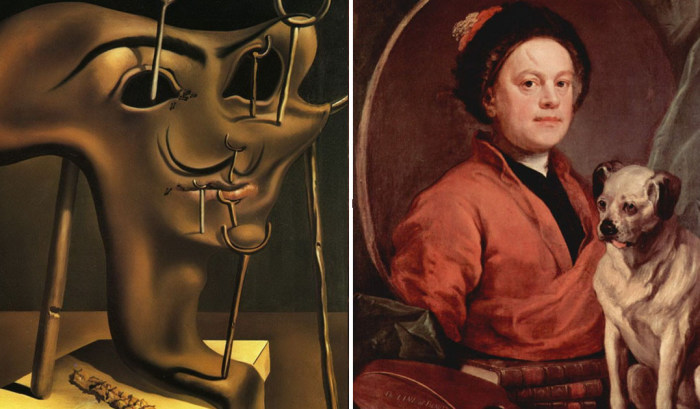Giovanni
3 curious facts about famous works of art
 Different people perceive works of art differently, and the viewer’s point of view can radically differ from what the artist himself put into his work. And many famous paintings have interesting stories that allow you to look at a picture or sculpture from a completely new perspective.
Different people perceive works of art differently, and the viewer’s point of view can radically differ from what the artist himself put into his work. And many famous paintings have interesting stories that allow you to look at a picture or sculpture from a completely new perspective.
1. Manneken Pis
Those who have ever been to Brussels must have seen one of Belgium’s most notable attractions – the Manneken Pis sculpture. As the name suggests, she portrays a little boy pissing in a fountain. Archival records show that the original sculpture was installed in 1388. Then it was a stone statue that served as a public fountain, but it was either destroyed or stolen at some point. The “Manneken Pis” in its current form was designed and installed by the Flemish sculptor Jerome Duchenoy in 1619. Continue reading
What is special about the landscapes that are called the most Italian: Veduta and Capriccio
 History did not preserve the name of the tourist that the first one wanted to take away from Italy a picturesque “postcard” in memory of the trip and thereby laid the foundation for a whole direction in the visual arts. However, it is unlikely that such a lover of beauty was the only one – this country in the south of Europe would sooner or later seduce connoisseurs with its landscapes immortalized on canvas.
History did not preserve the name of the tourist that the first one wanted to take away from Italy a picturesque “postcard” in memory of the trip and thereby laid the foundation for a whole direction in the visual arts. However, it is unlikely that such a lover of beauty was the only one – this country in the south of Europe would sooner or later seduce connoisseurs with its landscapes immortalized on canvas.
Translated from Italian, “Veduta” means “view”. This is a picture, drawing or engraving, which details the city landscape. In fact, Veduta is the prototype of photography, the golden rule of this genre is great accuracy. Therefore, the one who ordered the artist a city landscape really took home the memories of his journey. Continue reading
“Love Letter” by Jan Vermeer
 At the first glance at Jan Vermeer’s famous painting “Love Letter”, the name seems far-fetched, because the letter itself is hardly noticeable. But the lute in the hands of a woman plays a much more significant symbolic role. What does the letter contain? And what does the lute matter in the picture?
At the first glance at Jan Vermeer’s famous painting “Love Letter”, the name seems far-fetched, because the letter itself is hardly noticeable. But the lute in the hands of a woman plays a much more significant symbolic role. What does the letter contain? And what does the lute matter in the picture?
Genre painting
The paintings, which allow the observer to look at the everyday life of the depicted people, were especially popular in the XVII and XVIII centuries. They are called genre paintings, and Dutch genre art occupies an undeniable place at this stage in the history of art. A particularly popular topic was symbolism. Pictures depicting love letters can be attributed to a separate category of genre painting. Artists such as Jan Vermeer, Gabriel Metsu and Samuel van Hoogstrate have contributed to the world of art with canvases of this plot. Continue reading



